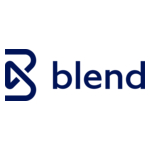Engagement banking
In my last article, I briefly mentioned a health programme (app) called Zoe that I am trialling.

As a customer, I want more from my bank than just products
Essentially, its goal is to make you a healthier person. Following the programme should have many benefits ranging from, but not limited to, better sleep, better cognitive awareness, better health and increased energy.
It starts by measuring your blood glucose reactions (in real time) and analysing your gut biome through a simple stool test. Once your tests have been analysed, Zoe prepares a full report on your body’s ability to process sugar and fat, and how good or not your diet is.
Next, it scores foods based on your results so that you can start to make healthier choices. It then goes on to provide recipes for meals that are good for you.
Throughout the programme, the app prompts you with what I call micro lessons and quizzes. These teach you facts about food and health while testing your understanding of what you have learnt.
All in all, I’m hooked on the app and I’m using it on a daily basis. Well done Zoe on mastering the experience of managing your health!
I’ve written about engagement banking before and I’ve argued that there has to be more that banks can do other than manage financial data and transactions. That rather than purely being driven by customer requests they could engage with customers bi-directionally and prompt customers proactively. Many banks do a level of this for cross-selling purposes and send some basic notifications for unusual transactions, but we are talking really basic stuff.
My view is that banking is still driven by products and not by customer needs. Let’s take selling mortgages rather than helping customers to buy a house as an example. The difference is getting a mortgage is fully facilitated by a bank, whereas buying a house involves a lot more steps and actions required by other parties. Bankers will argue that managing the home buying process is not their business. The danger with this is that if they don’t do it, someone else will own that experience and then provide prospective buyers with a mortgage as part of their offering, most likely through a partnership with one of their competitors. The bank could argue that they will compete to be the mortgage partner in this scenario. However, now the product gets commoditised as they compete on rates and not on overall value/benefits to the customer. Effectively, by not “engaging” with customers, they will eventually lose customers to players providing a better solution to a particular problem. I’ve written about this extensively as ‘experience-driven banking’, and like many changes, this will happen eventually – albeit slowly.
The home buying process is being revolutionised as we speak. New players like Moverly are automating and making the experience much more like Uber, where you can see the progress and status of your sale/purchase. Players like FirstHomeCoach are also starting to drive engagement. A fintech with the vision to own the experience will disrupt one of the largest revenue streams a bank has. If that happens, banks best ensure they have their cost/income ratio minimised so they can compete to partner on price and efficiency. Right now, I have yet to find a player with the level of engagement that health apps like Zoe and Simple (an intermittent fasting app) have, but they will surely come now “good models” exist.
With Zoe, the opportunity to get into new revenue streams is huge. I could see them making recommendations for specific products, restaurants and other health products like wellness clinics. They could even expand into areas beyond diet health such as fitness and exercise. Their opportunity can also be taken globally! The same is true for banks, albeit global expansion is certainly more challenging.
These apps also provide great content through their lessons and quizzes, which is another thing that banks could learn from as they greatly improve engagement, and we know that engagement drives loyalty and advocacy. Loyalty and advocacy then reduce the cost of sale and customer acquisition, so the benefits are huge.
In my mind, there is a picture/architecture forming around owning experiences. A combination of focusing on key customer journeys and fulfilling them entirely with bank and third-party products/services. Harnessing customer data and engagement feedback to truly personalise the experience, effectively making the customer feel like they are getting the personal attention that maybe local bank branches provided them in the past. This idea of personalisation has been around for decades in banking, so it is time customers get what they deserve, especially when there are great examples outside of banking to learn from.
This week, I’m just saying that as a customer, I want more from my bank than just products. I am increasingly having to serve myself and only interacting with my bank when there are issues. I would readily move to a bank that solves broader journeys for me or simply interacted with me in a more helpful way. While neobanks have proclaimed to provide “better banking”, I’ve yet to really see one live up to the promise, so the opportunity is still there.
About the author
Dharmesh Mistry has been in banking for more than 30 years both in senior positions at Tier 1 banks and as a serial entrepreneur. He has been at the forefront of banking technology and innovation, from the very first internet and mobile banking apps to artificial intelligence (AI) and virtual reality (VR).
He has been on both sides of the fence and he’s not afraid to share his opinions.
He founded proptech start-up AskHomey (sold to a private investor in spring 2023) and is an investor and mentor in proptech and fintech. He also co-hosts the Demystify Podcast.
Follow Dharmesh on Twitter @dharmeshmistry and LinkedIn.
Read all his “I’m just saying” musings here.











































